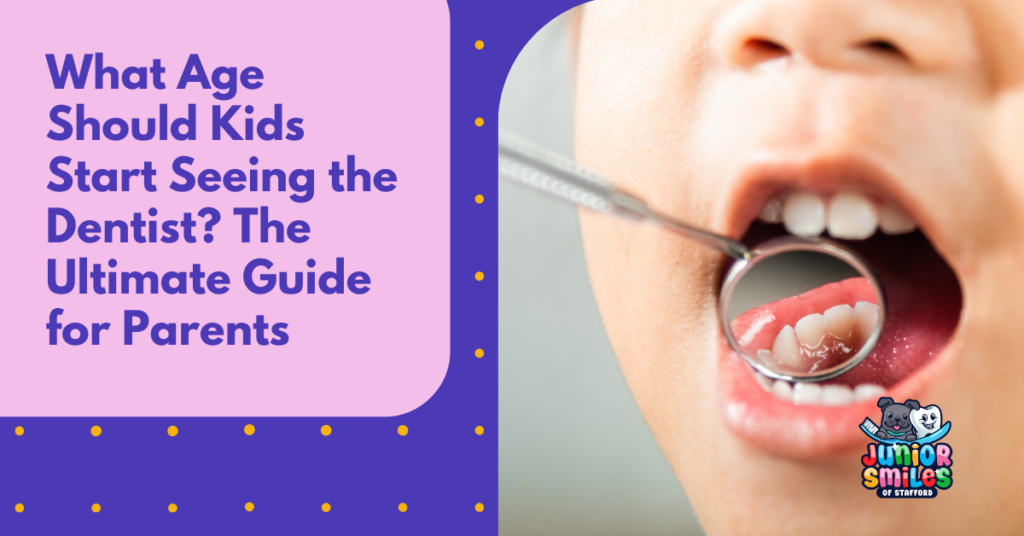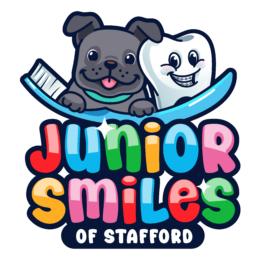What Age Should Kids Start Seeing the Dentist? The Ultimate Guide for Parents

As a parent, you want the best for your child—including their smile. But one common question that many parents ask is: “At what age should my child start seeing the dentist?”
The answer may surprise you: As soon as their first tooth appears—or by their first birthday at the latest.
If this seems early, you’re not alone. Many parents assume dental visits aren’t necessary until all baby teeth come in or a child is older. But in reality, early dental care is one of the best ways to protect your child’s oral health from the very beginning.
In this ultimate guide, we’ll cover everything you need to know, including:
- The best age to schedule your child’s first dental visit
- Why early dental care matters
- What to expect during your child’s appointments
- How to find the right pediatric dentist
- Tips for making dental visits positive experiences
Why the First Dental Visit Matters
The American Academy of Pediatric Dentistry (AAPD) and American Dental Association (ADA) both recommend that children see a dentist by age 1 or within six months after their first tooth erupts—whichever comes first.
This early visit is often called a “well-baby dental checkup” and plays a vital role in:
- Checking for signs of early tooth decay
- Evaluating jaw and tooth development
- Teaching parents how to clean baby teeth properly
- Offering guidance on thumb sucking, diet, and fluoride
- Building a foundation for a lifetime of healthy dental habits
Did you know? Over 40% of children have tooth decay by the time they reach kindergarten. Early dental care can help prevent this.
Timeline: When Should Kids Go to the Dentist?
Here’s a helpful timeline of when your child should see the dentist and what happens at each stage:
👶 Infancy (0–1 Year Old)
- Timing: First visit by 6–12 months
- Reason: Establish a dental home, prevent baby bottle decay
- What Happens: Quick oral exam, parent education, fluoride assessment
🧒 Toddlers (1–3 Years Old)
- Frequency: Every 6 months or as advised
- Focus: Monitoring tooth eruption, checking for early cavities
- Parental Role: Learn how to brush toddler teeth and manage teething discomfort
🧑🎓 Preschool (3–5 Years Old)
- Milestone: Full set of baby teeth (20 total)
- Services: Professional cleanings, fluoride, dental sealants may be recommended
- Behavioral Tips: Begin preparing your child to sit independently during visits
🧒🦱 Elementary Years (6–12 Years Old)
- Focus: Mixed dentition (baby + adult teeth), monitoring bite and jaw
- Possible Services: Sealants, X-rays, orthodontic evaluations
- Common Concerns: Cavity prevention, sports mouthguards, addressing dental anxiety
🦷 Teens (13–18 Years Old)
- Maintenance: Continued cleanings, wisdom tooth monitoring
- Orthodontics: Braces or Invisalign may be considered
- Independence: Encouraging personal responsibility for oral hygiene
What Happens at the First Dental Visit?
Your child’s first visit is more about prevention and education than treatment. It’s often short and sweet—lasting around 30 minutes. Here’s what you can expect:
🪥 1. Introduction and Comfort
The dentist and staff will work to make your child feel safe and welcome. Parents are typically allowed to stay with infants and toddlers throughout the appointment.
🦷 2. Oral Examination
The dentist checks:
- The number and positioning of teeth
- Gums and tongue health
- Signs of decay, infection, or developmental concerns
🍼 3. Discussion with Parents
You’ll get personalized advice on:
- Brushing and flossing techniques
- Fluoride use
- Teething and thumb-sucking habits
- Bottle and pacifier use
- Nutritional guidance
🧴 4. Fluoride Treatment (If Needed)
If your child is at risk for cavities, the dentist may apply a fluoride varnish to strengthen their teeth.
Common Questions Parents Ask
❓Isn’t It Too Early to Worry About Baby Teeth?
Not at all. Baby teeth are essential for chewing, speaking, and guiding permanent teeth into place. Untreated decay in baby teeth can lead to pain, infection, and even problems with adult teeth later on.
❓What If My Child Only Has One Tooth?
That’s perfectly okay! The point of the first visit is to get your child comfortable with the dental office and give you tools to protect their new smile.
❓How Often Should My Child See the Dentist?
Every 6 months is the general rule unless your child has specific dental concerns. Regular checkups allow the dentist to monitor development and catch problems early.
Pediatric Dentist vs. General Dentist: Who Should You Choose?
While many general dentists treat kids, pediatric dentists are specialists trained to work with infants, toddlers, and children through adolescence.
Benefits of Seeing a Pediatric Dentist:
- 2–3 extra years of child-focused dental training
- Expertise in managing behavioral concerns and dental anxiety
- Offices are child-friendly with toys, games, and age-appropriate décor
- More experience with special healthcare needs
Pro Tip: Look for a pediatric dentist with good reviews, friendly staff, and a calm office environment. The goal is to make each visit a positive experience!
Red Flags: When to See a Dentist Immediately
While routine visits are scheduled every six months, don’t wait if you notice:
- White or brown spots on teeth
- Bad breath that doesn’t go away
- Bleeding or swollen gums
- Difficulty eating or chewing
- Prolonged thumb sucking or pacifier use after age 3
- Injury to the mouth or teeth
How to Prepare Your Child for Their First Dental Visit
Making that first dental appointment a positive one sets the tone for a lifetime. Try these tips:
💬 Talk About It
Use positive language. Avoid words like “hurt,” “drill,” or “shot.” Instead, say things like:
- “The dentist is going to count your teeth!”
- “You’ll get to sit in a cool chair and see some fun tools.”
📚 Read Books or Watch Videos
Children’s books like The Berenstain Bears Visit the Dentist or Peppa Pig’s Dentist Trip can help normalize the experience.
🧸 Bring Comfort Items
Let your child bring a favorite stuffed animal or blanket to help them feel secure.
🕒 Schedule Smart
Avoid naptime or mealtimes. Choose a time when your child is typically well-rested and calm.
Cost of the First Dental Visit
Worried about the cost? Here’s a general idea:
| Service | Cost (Without Insurance) | Cost (With Insurance) |
| Exam & cleaning | $80–$150 | $0–$50 (often fully covered) |
| Fluoride treatment | $20–$50 | Often fully covered |
| X-rays (if needed) | $30–$100 | Covered or low co-pay |
Many insurance plans (including Medicaid and CHIP) cover pediatric dental care. Be sure to ask your provider what’s included.
Dental Milestones to Watch For
| Age | Milestone |
| 6 months | First tooth appears |
| 1 year | First dental visit |
| 2–3 years | Full set of baby teeth (20 total) |
| 6 years | First adult molars erupt |
| 6–12 years | Baby teeth gradually fall out, adult teeth come in |
| 12+ years | Full adult set of teeth (except wisdom teeth) |
The Long-Term Benefits of Early Dental Care
✅ Prevents early childhood cavities
✅ Builds positive dental habits
✅ Allows for early detection of bite or speech problems
✅ Encourages good nutrition and oral hygiene
✅ Saves money on costly treatments later
In fact, studies show that children who visit the dentist before age 1 have 40% lower dental costs over their lifetime compared to those who wait.
Final Thoughts: Start Early, Smile Bright
So, what age should kids start seeing the dentist? The answer is clear: by age 1, or within six months of the first tooth erupting.
Early dental visits aren’t just about protecting teeth—they’re about setting the stage for lifelong oral health, minimizing fear, and ensuring your child grows up with confidence in their smile.
By choosing the right pediatric dentist and staying proactive about routine care, you’re making a smart, healthy investment in your child’s future.
Looking for a Pediatric Dentist in Stafford, VA?
At Junior Smiles of Stafford, we love helping kids smile! Our friendly team specializes in gentle, age-appropriate care for infants, toddlers, and children of all ages.
📍 Located conveniently in Stafford, VA, we make every visit stress-free and educational—for both kids and parents.

